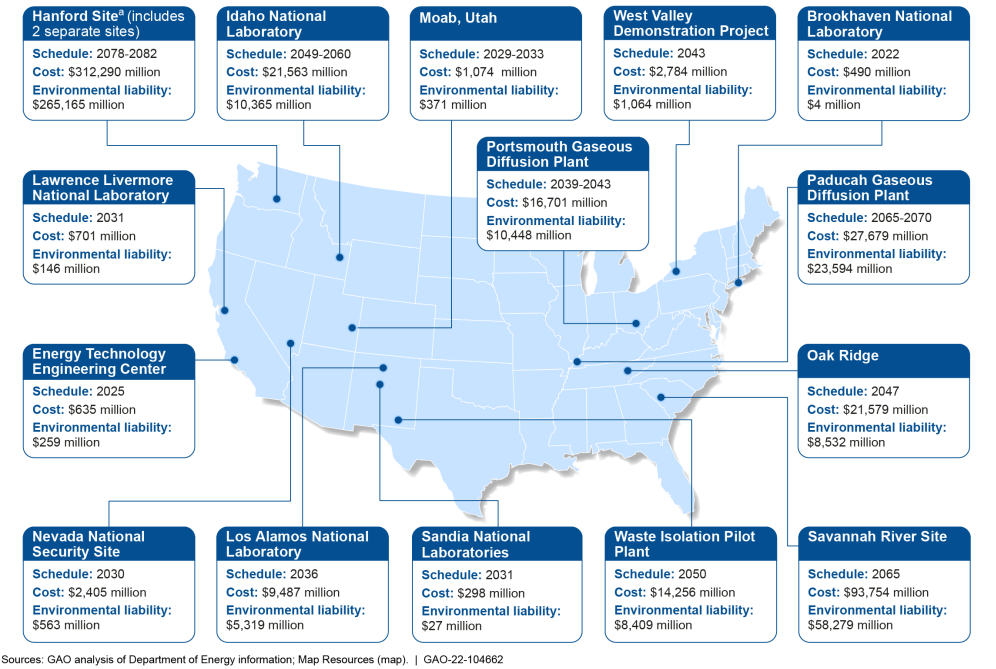Remaining EM cleanup over $392 bn: breaking down costs in the complex
Earlier this month, the Government Accountability Office (GAO) released an insightful report reviewing and summarizing the status and performance of the Department of Energy (DOE) Office of Environmental Management’s (EM) largest projects and operations. In total, EM has over $392 billion to go before cleanup of the nation’s former weapons complex is complete.
The report quotes figures for various costs associated with EM projects and operations, including life-cycle costs, environmental liability, and project costs.
Life-cycle cost
Life-cycle costs, as described in the report, include the scope, cost, and schedule profiles for the work activities required to complete EM’s mission at specific sites, including costs that have already been incurred. Also included in this estimate is a Risk Management Plan and a risk register.
The report provides life-cycle cost estimates for the then-16 active EM sites; work at Brookhaven National Laboratory has since been completed. The total estimated life-cycle cost of the now-15 active sites is over $525 billion.
The greatest contributor to the EM complex life-cycle cost is the Hanford Site, which represents $312 billion of the total. Cleanup is not scheduled to be completed at the site until 2078 to 2082.
Environmental liability
In the report, environmental liability is EM’s estimate of the probable costs for the future cleanup of legacy defense waste for a given site. The estimate largely reflects estimates of future costs to clean up legacy radioactive tank waste and contaminated facilities and soil. The environmental liability for each site includes only the remaining costs for future work. The current total of environmental liabilities at the 15 active sites is $392 billion.
Broadly, DOE’s liability is based on:
Estimate updates,
Schedule slippage,
Changes in assumptions,
Plan changes,
Funding shortfalls,
New scope, and
Non‐monetary loss contingencies, among other things.
In recent years, EM’s environmental liability has seen an increase. A 2019 GAO report addressed key factors in this growing figure, which include:
Contract and project management problems;
Regulator changes;
Accidents, work stoppages, or disruptions;
Technical challenges;
Scope, cost, or schedule changes; and
Repository uncertainty.
Project cost
Project cost estimates quoted in the 2022 GAO report are baseline costs for capital asset projects established at critical decision 2 (CD-2) (project performance baseline approved) and the current project cost estimate. The costs added for risks reflect the amount added to the project baseline to account for both contractor and EM controlled risks. All other project costs include costs for performing the work, EM administrative costs, and contractor award fee.
According to EM data, as of December 2020, EM was actively managing 23 capital asset projects. Of these 23 projects, 15 had reached at least the CD-1 milestone (alternative selection and cost range approved) and had an estimated total project cost of $100 million or greater, with total project costs ranging from $127 million to $16.8 billion. The total project cost estimate for these 15 projects ranges from $20.11 billion to $20.36 billion, depending on the final cost estimates for two projects that have not started work at Oak Ridge.
ECA encourages all members to review the full report. Additional information from the report, including site-specific details, will also soon be available in a forthcoming cleanup guide resource on the ECA webpage.


